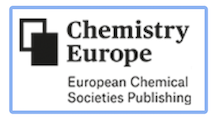Dr. Fariba Asgharpour, Prof. Ali Akbar Moghadamnia, Dr. Sohrab Kazemi, Dr. Hamid Reza Nouri, Prof. Mahdi Pouramir, Seyedeh Narges Mousavi, Prof. Mina Motallebnejad
Abstract
Propolis is a natural resinous mixture found in beehives. It has pharmacological and biology properties, which are related to its chemical composition. In the current study, the chemical composition of ethanolic extract of Iranian propolis (EEIP) was determined through high-performance liquid chromatography (HPLC). The radical scavenging activity of EEIP was evaluated through 2,2-diphenyl-1-picrylhydrazyl (DPPH) and 2,2′-azino-bis (3-ethylbenzothiazoline-6-sulfonic acid (ABTS) along with ferric reducing ability power (FRAP) assay. In addition, the cytotoxic effects and intracellular capacity for reactive oxygen species (ROS) production of EEIP and individual components were evaluated on human breast cancer cell line, MCF-7. Also, effects of EEIP on cell viability was measured on fibroblast as a normal cell line. The obtained results revealed high contents of total phenolics and flavonoids in the EEIP extracts. The bioactive compounds that were identified in the EEIP extracts included caffeic acid, quercetin, chrysin, galangin, and pinobanksin. The EEIP and polyphenols were cytotoxic for MCF-7 cells and significantly tended to increase intracellular ROS production in a dose dependent manner. In contrast, EEIP had no cytotoxic effect on fibroblast cells. Taken together, we suggest that the synergistic effect of the main components of propolis is related to increase of ROS and inhibition of MCF-7 cell proliferation.
* THESE STATEMENTS HAVE NOT BEEN EVALUATED BY THE FOOD AND DRUG ADMINISTRATION. THIS IS NOT INTENDED TO DIAGNOSE, TREAT CURE OR PREVENT ANY DISEASE.
